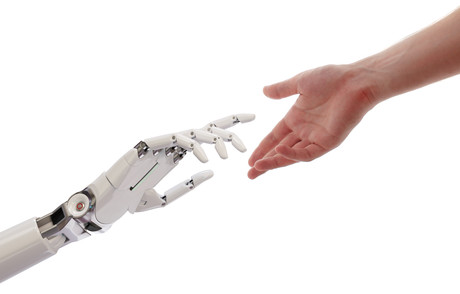Improving workplace health and safety with cobots
By Peter Hern, Country Manager, Oceania, Universal Robots
Monday, 10 December, 2018

Employees can be exposed to multiple occupational health and safety (OHS) hazards from heavy lifting, repetitive tasks and other manual handling tasks. While it is important for manufacturers to up their production capabilities and remain competitive, workplace safety for employees needs to be taken into consideration.
In Australia, time lost to health and safety incidents overall cost the economy over $61bn between 2012 and 2013. While the state of Australian workplace health and safety is improving, Safe Work Australia conducted a study which found a total of 5.6 serious incidents occur for every one million hours worked, leading to an average of 5.2 weeks of labour time being lost.
Workplace health and safety incidents not only have a detrimental impact on the economy and worker productivity, but also on employees’ overall health and wellbeing. It is vital that steps are taken towards improving workplace health and safety for Australians in today’s technological age. In terms of transforming working environments, collaborative robots (or cobots) are leading the charge of this shift by working in unison with humans.
The most frequent cause of injury is that of body stressing and this occurs 39.3% of the time, over 15% more than any other incidents in the workplace. Body stressing most commonly occurs through labour that is repetitive in nature, resulting in musculoskeletal injuries. It should come as no surprise that the manufacturing sector has some of the highest levels of workplace injury, coming in at the second most frequent of all industries, at 8.4 per million hours worked, or 15.5 per 1000 employees.
Manufacturers can improve workplace health and safety to a significant extent by automating work that is hazardous, dusty, dull and repetitive. Leading global management and consulting firm McKinsey & Company (McKinsey) discovered that 59% of the roles people perform in the manufacturing industry could be automated. This is where cobots come in.
Cobots are able to radically alter more traditional working environments by allowing humans to work closely alongside them. This in turn alleviates employees from the tasks that can most frequently cause injuries. The technology that characterises cobots has many in-built safety features, including fixed and adjustable force limits, as well as sensors and automatic stopping. Manufacturers can effectively reduce health and safety incidents, essentially saving time and money, by deploying cobots in a three-step process. This process involves organisations identifying hazardous jobs, completing thorough risk assessments and implementing control measures.
ASSA ABLOY New Zealand, a global leader in door hardware solutions, is a prime example of a company that has used cobots to alleviate workers from repetitive work using this three-stage process, ultimately leading to improved workplace health and safety conditions.
Firstly, hazardous jobs were identified in its workplace, these being the onerous physical tasks of its production staff having to assemble locks and screw face plates. At the time, operational staff were rotated every two hours, due to the demands of repetitive wrist and shoulder movements.
Secondly, a thorough risk assessment was undertaken and the company concluded automating these processes would relieve its production staff. In contrast to traditional robotic solutions, the risk assessment revealed the cobots’ small and lightweight robotic arms would work safely alongside staff without the need for any safety barriers, creating a truly united human-cobot workforce. Knowing that employees can work in very close proximity to the cobots without safety guarding provides ASSA ABLOY NZ with peace of mind.
Lastly, the company implemented cobots, automating the final step on the lock bodies production line and relieving operators of work hazards. Staff reaction to the cobots has been extremely positive and they have upskilled as a result of cobot integration. New roles are being created for the team which are more focused on quality and process monitoring of material supply, compared to the role of a traditional assembly worker.
With productivity, competitiveness and sustainability being at the forefront of the manufacturing industries’ minds, cobots are a logical way for companies to revolutionise their production lines. By eliminating multiple OHS hazards from the workplace, not only do cobots enable greater safety for employees, but also increase productivity and provide economic value by alleviating cases of workplace injury, reducing loss of hours and revenue.
Safer loading with bespoke electric winch
A UK building products company required a new winch system to load heavy goods vehicles (HGVs).
From pandemic to prevention: companies address manual handling risks
Across all work industries, manual handling injuries (or body stressing injuries) represent ~37%...
Using high-tech fleet innovations to improve driver safety
A JBM Logistics truck was driving down an empty country road in regional Australia, when a...







